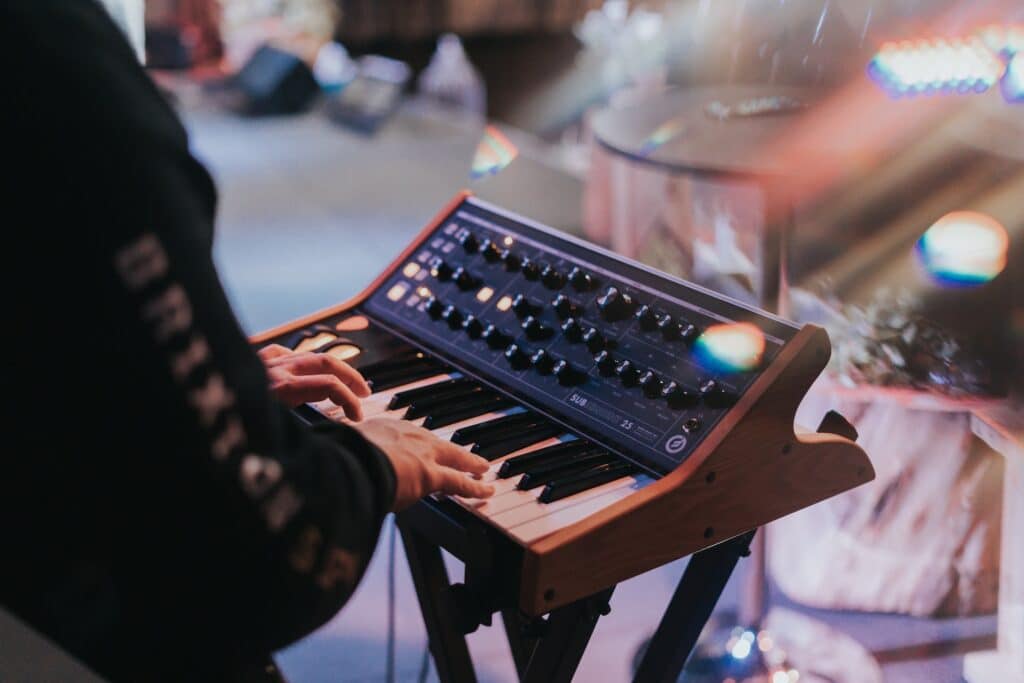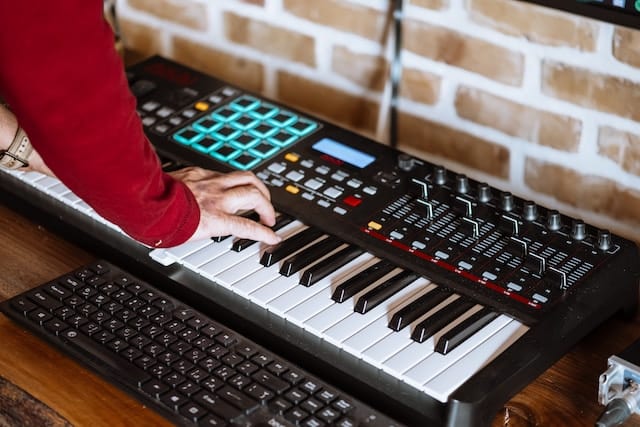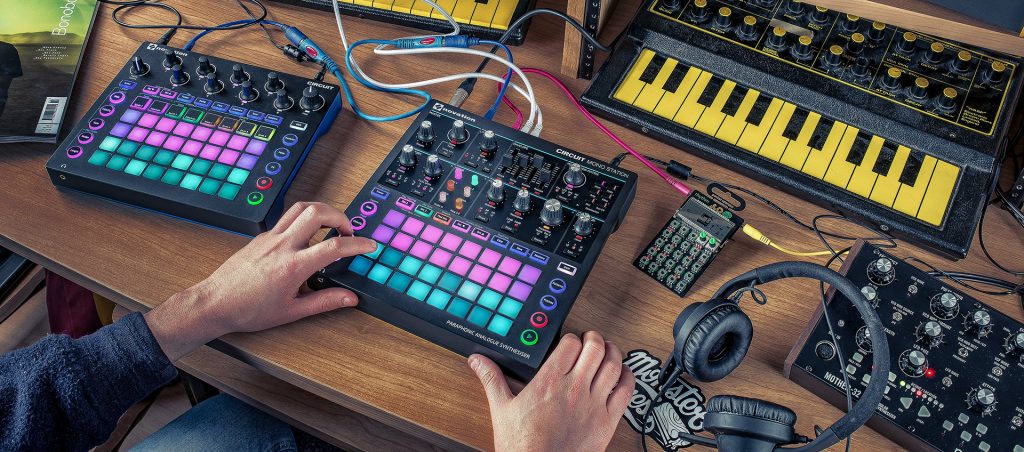While it may seem surprising, the synth has been around for over 70 years Trusted Source Modular synthesizer - 1965 These technological innovations, the first attempts to resynthesize traditional instruments, led to the synthesizer. artsandculture.google.com . Over the last decade, a lot of musicians and producers have made the switch to a hardware hybrid studio set up to make the most of VSTi software and real synthesizers. The draw of the synthesizer instruments is their usability and immediacy which can really spark creativity. For those wanting a hardware instrument, the first consideration is monophonic vs polyphonic synth.
In this article, we will cover the differences between monophonic and polyphonic synthesizers and give you some concrete examples of both. But, it would be impossible to offer advice on which synthesizers to purchase because every producer has different needs. It is true that analog synths can create amazing basses and leads with a single note. But, you can create similar tones with an analog polyphonic synthesizer too.
What Is a Monophonic Synthesizer?

A monophonic synthesizer can only play a single note at a time and there are four major applications for your music, they are:
1. Powerful Bass Tones
Historically, an analog Moog Model D was the go-to synth of funk, pop, and other bass heavy music styles. Listen to the playing of Herbie Hancock, Bernie Worrell, and even early Trent Reznor (Nine Inch Nails) and you can hear plenty of Moog bass tones.
2. Powerful Leads and Solos
A monophonic synthesizer will trigger the notes in a very unique way. Along with good sound design and mixing techniques, this helps the synthesizer to really cut through during a keyboard solo.
3. Sound Design Techniques
You can get fantastic results with even a simple instrument such as the Korg Monotron delay monophonic synthesizer. Clever use of the oscillator, filter, LFO and analog delay can create some amazing sounds to play into your DAW or create sampled instruments.
4. Techno Bass Lines
We regard this as separate from other bass tones because acid and techno music has a heavily sequenced nature that can be harder to replicate in software. For many years the venerable Roland TB-303 was hard to source unless you had thousands of dollars for a second-hand unit from the 80s. But, now you can get a clone of the 303 from Behringer or go with another analog alternative, such as Arturia Minibrute 2S, Korg Monologue, and the Roland TB-03 emulation.
Pros and Cons
Monophonic instruments are considered to be the best synthesizers for beginners because they are easier to program and play and less expensive to purchase. Let’s take a closer look at the main pros and cons, they are:
Pros:
- The small form factor for traveling and studios where space is at a premium.
- Great for leads and basses.
- Fantastic sound design options.
- Less expensive.
Cons:
- Polyphonic synthesizers tend to be larger and heavier.
- A monophonic synthesizer cannot play true chords.
- Not a great option if you want pad sounds.
- Generally more expensive to buy.
What Is a Polyphonic Synthesizer?

A polyphonic synthesizer can play more than one note at a time. This synth has been around since the mid 70s but it revolutionized electronic music. There are four major applications for this type of instrument in your studio, they are:
1. Playing Chords
If you want to play chords for R&B, pop, and more, you need plenty of voices or notes to play at the same time. Playing more complex chords with two hands at the same time will need a larger polyphony sound of 8 notes or more.
2. Ambient Pads, Textures, and Complex Drones
If you want to use digital textures, evolving drones, and glassy pads in your music you probably need plenty of polyphony. It is possible to make sounds like this with a monophonic synthesizer paired with delays and reverbs. But, if you’re interested in ambient or new age music you need a polyphonic synthesizer.
3. Playing with a Band
Playing a synthesizer with a retro or 80’s cover band requires at least one polyphonic synthesizer. It would be virtually impossible to play tracks from artists, such as Prince, Duran Duran, Michael Jackson, and others without polyphony.
4. The Workhorse
If you don’t have the budget or space for multiple synthesizers you can get a lot of mileage out of one good polyphonic synthesizer. Many instruments have multiple routing options, multitimbrality, and a built-in sequencer. You can even use a single larger synth as a MIDI controller for your software VSTi instruments or as a control surface for your DAW.
Pros and Cons
Polyphonic synthesizers tend to have a larger form factor, they can be more complex to learn and the purchasing cost can be higher. The pros and cons of this type of synthesizer are:
Pros:
- It allows you to play chords, pads and textures.
- If you like the feel or a larger piano keyboard this is a great option.
- A multitimbral polyphonic synthesizer can play multiple tones at once.
- It may be possible to “stack notes” to create a very thick mono sound.
Cons:
- A polyphonic synthesizer keyboard can be a large instrument.
- It can take more time to learn and master.
- This is a more expensive way to get into sound synthesis.
Digital vs Analog Synthesizers
Many modern digital synthesizers are polyphonic because they don’t need the extensive circuitry of their analog counterparts. So, a non-analog polyphonic synthesizer will be less expensive than a genuine analog which is attractive for budget conscious keyboard players that need polyphony. But, for some people that traditional analog sound is the only thing that matters, and that comes with a premium price tag for an analog polysynth. An analog synth requires separate circuitry for each voice so the size of the instrument increases with each extra note of polyphony.
Final Thoughts
Hopefully, this article has helped to demystify the monophonic vs polyphonic synth controversy to help you make an informed purchasing decision. There are many factors to consider and your own unique needs will determine the best choice. Most beginners will gravitate to a monophonic synthesizer because it’s less expensive and easier to learn. A monosynth can be pretty versatile with clever programming. A polyphonic synthesizer is capable of more, but it usually has a larger form factor and it costs more to purchase. The good news is that there are many monophonic and polyphonic synthesizers on the market and you’re sure to find one that meets your needs.















